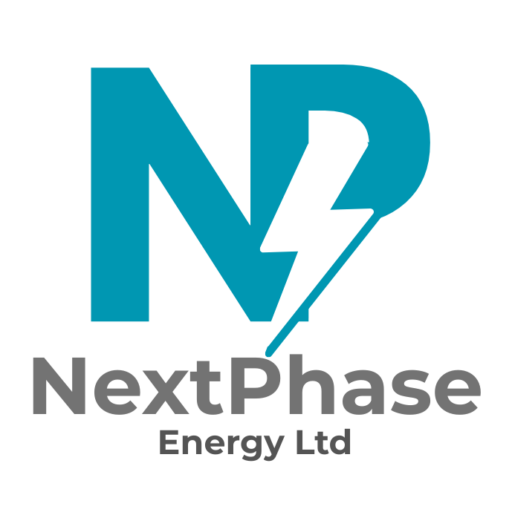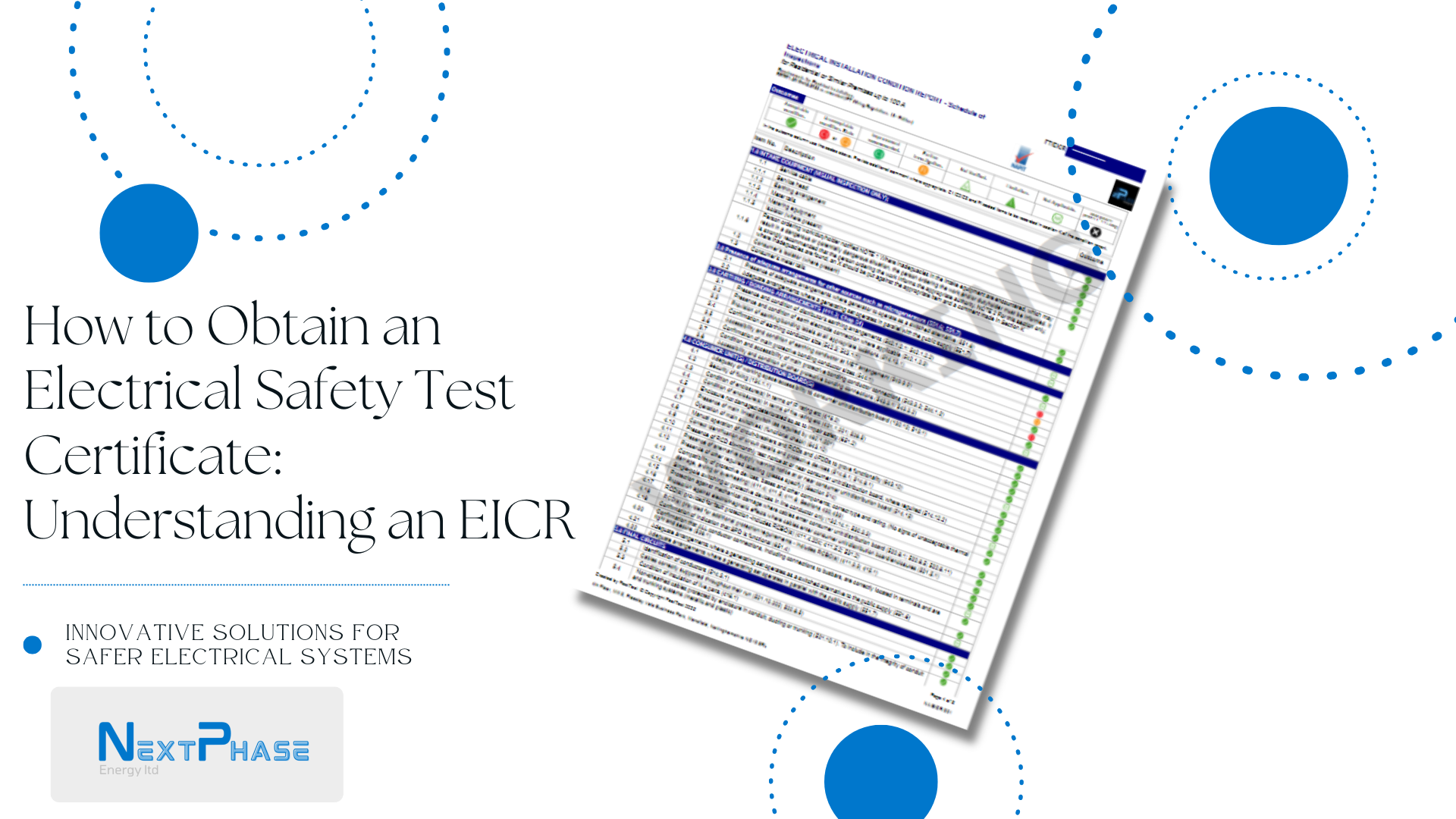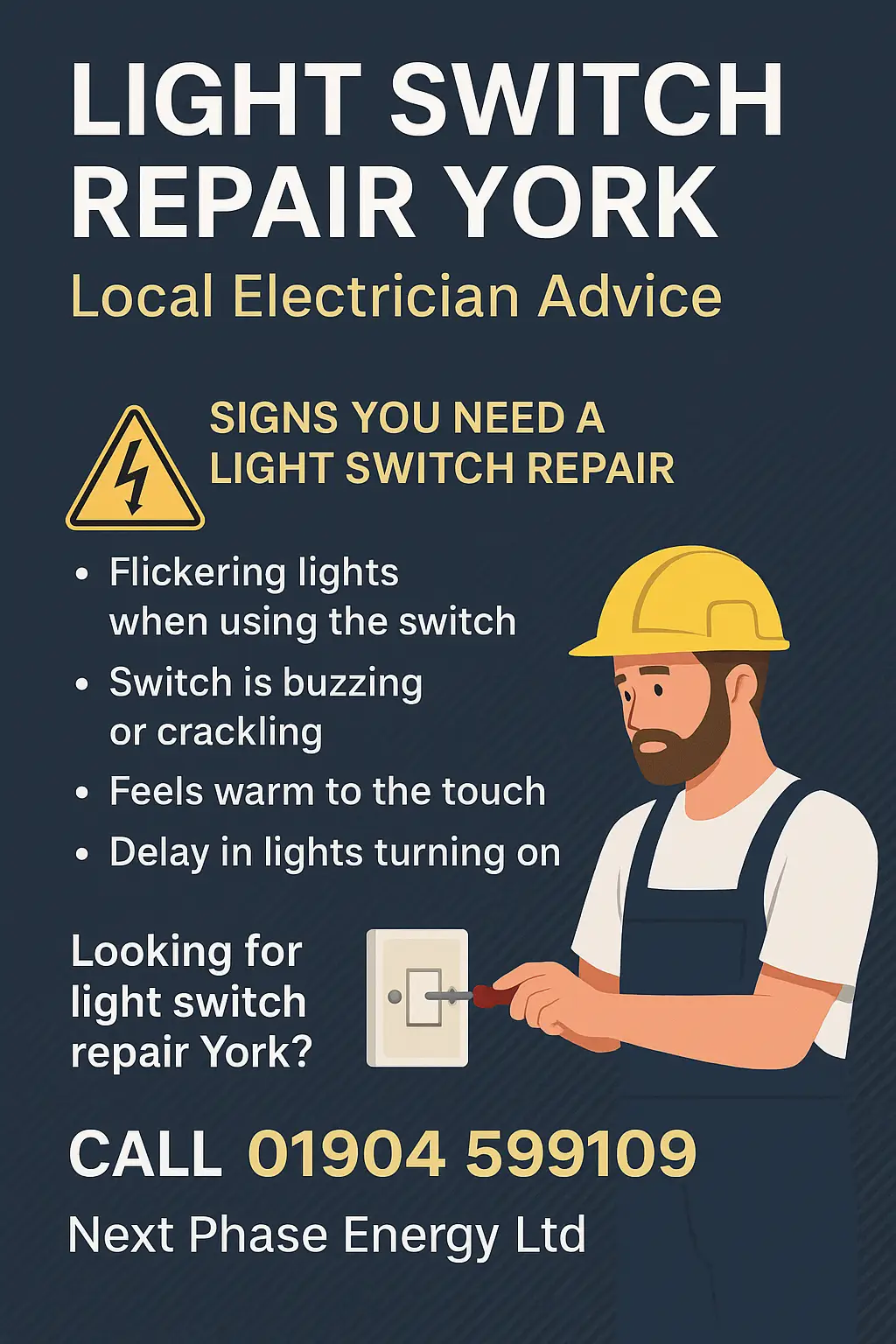By Matt Crabb
Electrical safety is something no property owner should ignore. Whether you’re a landlord, homeowner, or business owner, ensuring your electrics are safe is a legal requirement in many cases—and a smart decision for everyone else.
One of the best ways to guarantee electrical safety is by obtaining an Electrical Installation Condition Report (EICR). But what exactly is an EICR, and how do you get an electrical safety test certificate? Let’s break it down in simple, easy-to-understand terms.
What is an EICR?
An Electrical Installation Condition Report (EICR) is an inspection that checks the fixed wiring installation in a property. Unlike Portable Appliance Testing (PAT), which focuses on plug-in electrical items, an EICR examines things like:
- Consumer units (fuse boxes)
- Protective bonding
- Lighting, switches, and sockets
- Wiring and other fixed electrical components
The goal? To identify defects, wear and tear, or potential safety risks before they become a real hazard.
Why Do You Need an EICR?
An EICR isn’t just a box-ticking exercise—it’s crucial for safety and compliance. Here’s why:
- Legal Requirement for Landlords – Since July 1st, 2020, landlords must conduct an EICR every five years or at the start of a new tenancy.
- Homeowner Safety – Faulty wiring is responsible for thousands of house fires every year in the UK. Regular checks prevent disasters.
- Business Compliance – Companies must have their electrics inspected every five years to comply with UK regulations.
- Insurance & Liability Protection – Without a valid EICR, insurance claims for electrical damage could be rejected.
How to Get an Electrical Safety Test Certificate (EICR)
1. Find a Qualified Electrician
Only a certified electrician can perform an EICR. Look for one registered with recognised bodies like NAPIT and other accreditation like Which? Trusted traders.
Hiring a trusted professional ensures the job is done correctly.
2. Schedule an EICR Inspection
The electrician will visit your property and perform:
- Dead Testing – Turning off power to check circuit integrity.
- Live Testing – Ensuring components function correctly and shut down safely in an emergency.
- Visual Inspection – Checking for exposed wiring, faulty sockets, and wear and tear.
3. Receive the EICR Report
Once testing is complete, the electrician will issue an EICR certificate with one of the following classifications:
- C1 (Danger Present) – Immediate risk, requires urgent action.
- C2 (Potentially Dangerous) – Must be fixed soon to prevent hazards.
- C3 (Improvement Recommended) – Not urgent but advisable.
- FI (Further Investigation Required) – More testing needed.
4. Complete Any Necessary Repairs
If the EICR report highlights faults (C1 or C2 issues), they must be rectified before the certificate can be issued. Your electrician may be able to fix them immediately or schedule remedial work.
5. Store Your Certificate Safely
Once you receive your EICR certificate, keep it in a safe place. Landlords must provide a copy to new tenants and local authorities upon request.
How Often Should You Get an EICR?
- Landlords – Every 5 years or at the start of a new tenancy.
- Homeowners – Every 10 years (annually for homes with swimming pools).
- Businesses – Every 5 years.
However, if you’ve recently had major renovations, water damage, rodent issues, or frequent electrical faults, you should schedule an EICR sooner.
FAQs About an EICR
How long does an EICR take?
It depends on the property size and number of circuits, but typically:
- 2-3 hours for a small property
- Up to 5+ hours for a larger home or business
What happens if I get an unsatisfactory an EICR?
If your EICR flags C1 or C2 issues, you must fix them ASAP to receive a satisfactory certificate. Your electrician can often handle minor fixes on the spot.
How much does an EICR cost?
Costs vary depending on:
- Property size
- Location
- Number of circuits tested
Expect to pay between £250 – £500 for a residential EICR, while commercial properties may cost more.
Do I need an EICR for a new build?
New properties typically receive an Electrical Installation Certificate (EIC) instead. However, after five years, an EICR is required.
FAQs About NextPhase Energy Ltd
Who is NextPhase Energy Ltd?
NextPhase Energy Ltd is a leading electrical services provider, offering EICRs, electrical installations, and safety inspections across the UK.
Are NextPhase Energy Ltd electricians certified?
Yes! All electricians at NextPhase Energy Ltd are fully qualified and accredited by NAPIT and Which?.
Does NextPhase Energy Ltd provide remedial work?
Absolutely. If your EICR identifies faults, our team can carry out repairs quickly and affordably.
How can I book an EICR with NextPhase Energy Ltd?
Simply call us or book online! Our team is ready to help with all your electrical safety needs.
Final Thoughts: Don’t Risk Electrical Safety!
An EICR is a simple but essential step to ensure your property’s electrics are safe, legal, and compliant. Whether you’re a landlord, homeowner, or business owner, booking an inspection with a qualified electrician is the best way to protect your property and its occupants.
Need an EICR? Get in touch with NextPhase Energy Ltd today!




